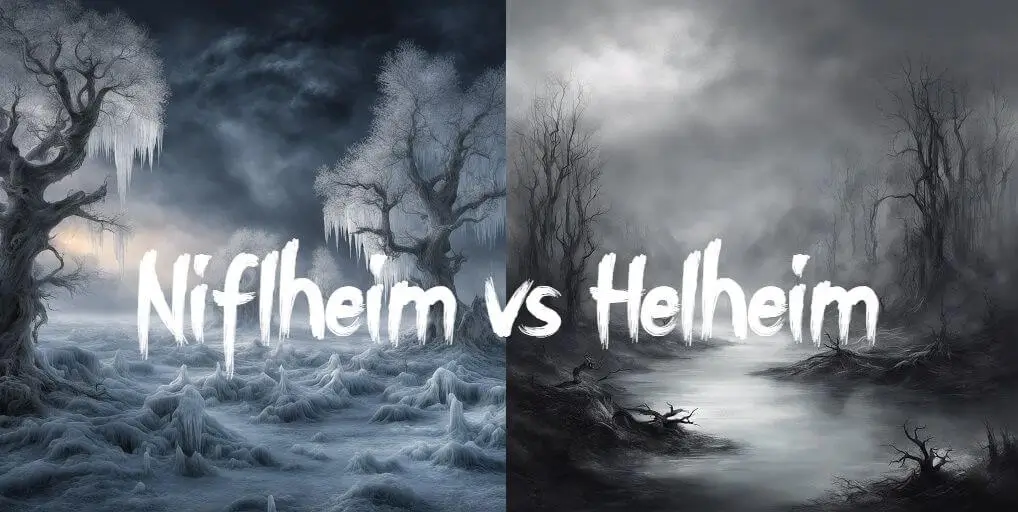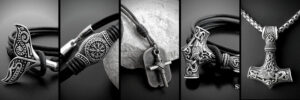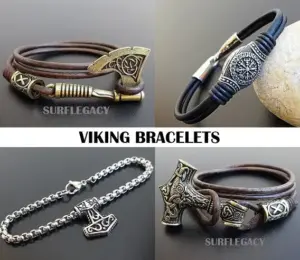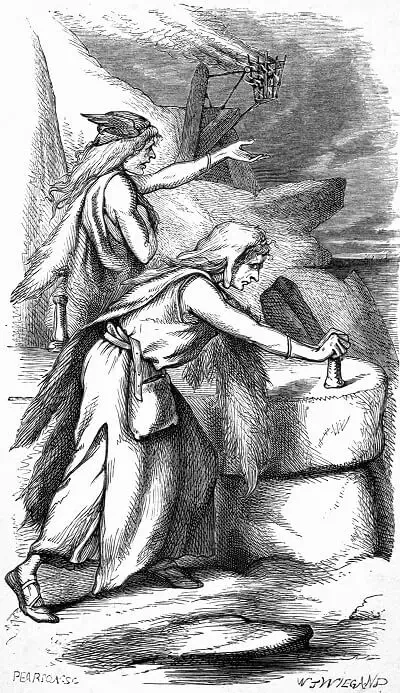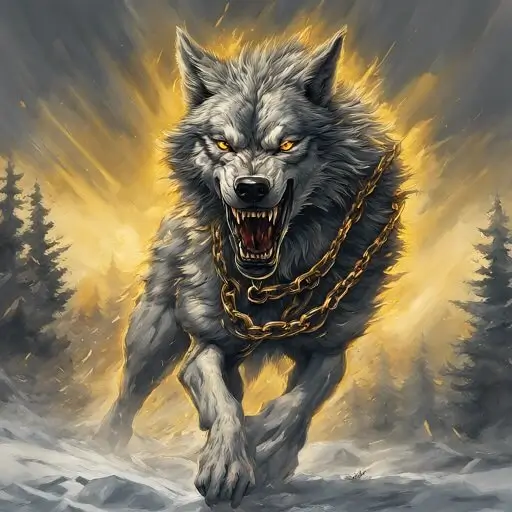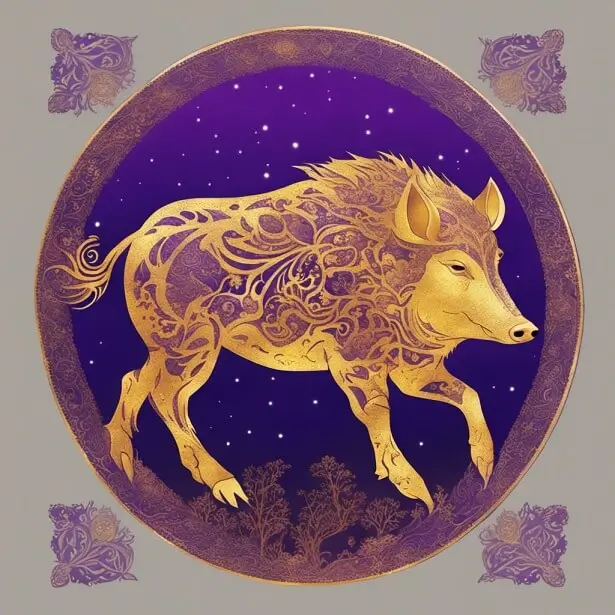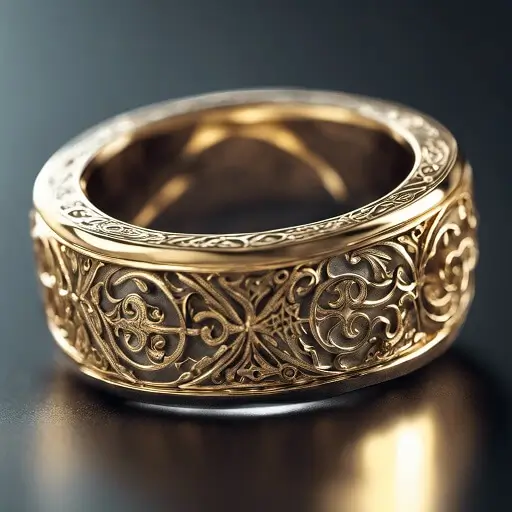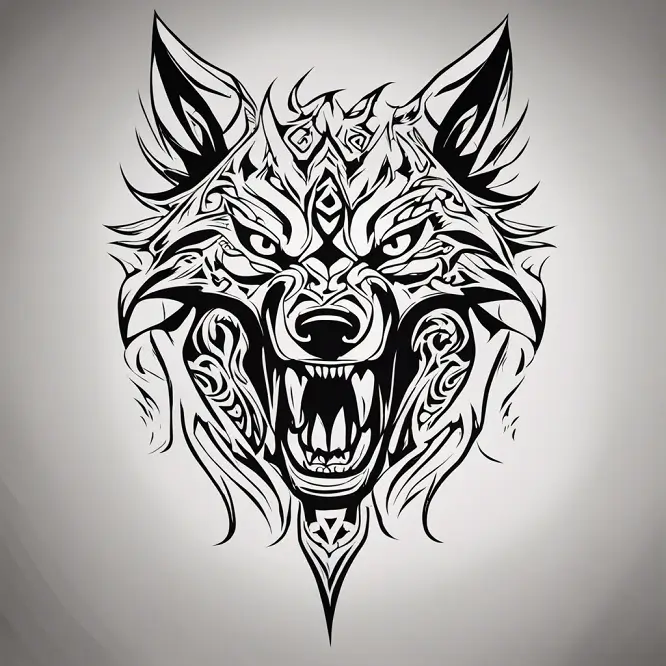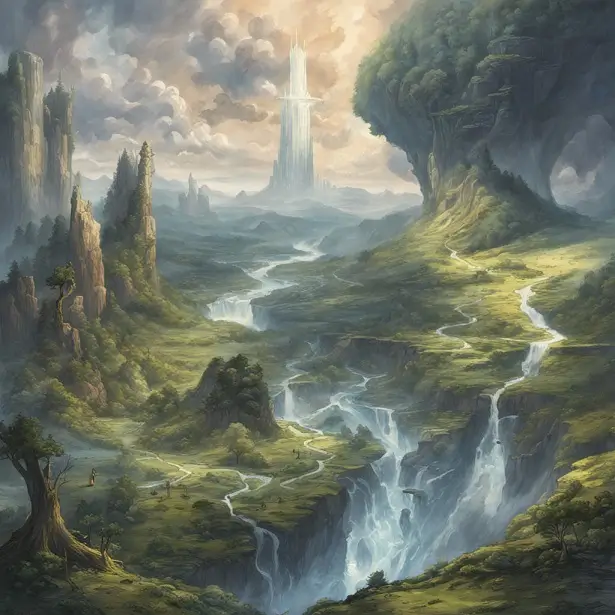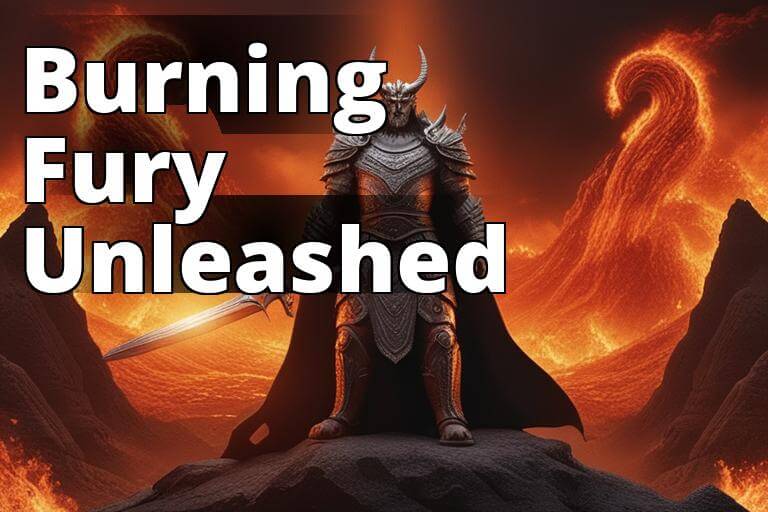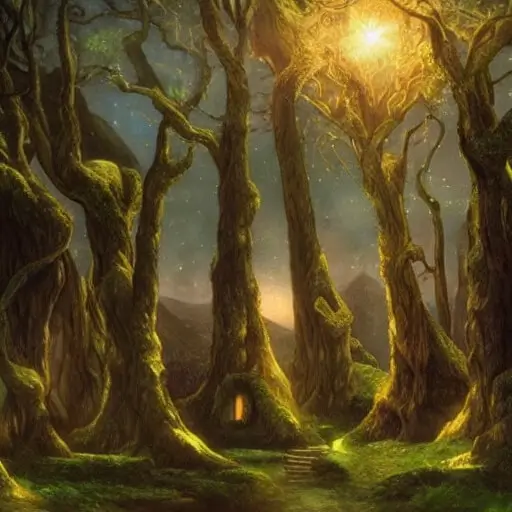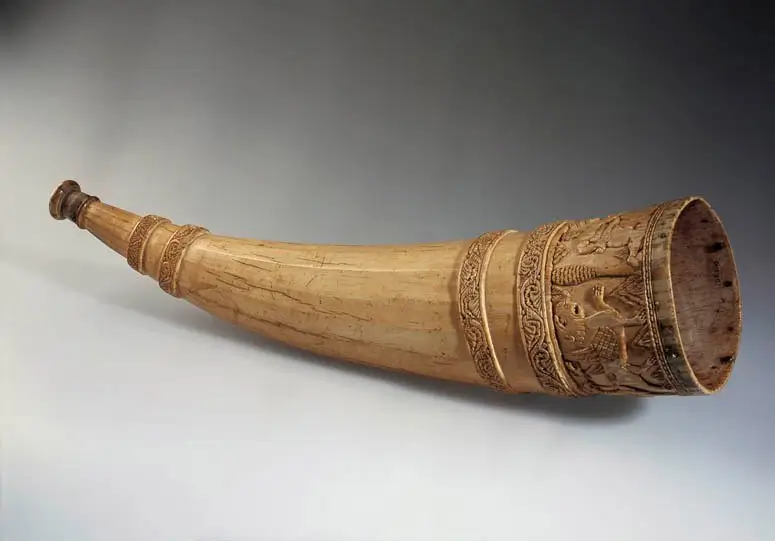The ancient Norsemen had a complex and fascinating conception of the afterlife, far from the binary heaven-or-hell perspective of many other cultures, the Vikings envisioned numerous realms waiting beyond the grave.
Of these, two have become intrinsically linked in the popular imagination: Niflheim and Helheim. However, confusion abounds regarding the relationship between these two shadowy realms.
Are they interchangeable names for the same underworld? Or do they represent distinct concepts within Norse cosmology? This article aims to unravel the mysteries shrouding Niflheim and Helheim and clarify how they functioned in Norse myth.
Understanding the Norse Afterlife
To grapple with the mist-veiled relationship between Niflheim and Helheim, one must first understand the larger Norse cosmological framework.
The Vikings envisioned the universe as a vast, interconnecting system of nine realms nestled amid the limbs and roots of the world tree, Yggdrasill.
These included the realm of gods (Asgard), humans (Midgard), giants (Jotunheim), elves (Alfheim) and dwarves (Svartalfheim). In addition, there were more nebulous realms like Vanaheim, home of the Vanir gods, and Muspellheim, land of elemental fire.
The exact count of nine realms comes from Snorri Sturluson’s 13th-century text, the Prose Edda. But the concept of multiple invisible worlds beyond the mortal plane dates back centuries earlier to the Viking Age itself.
We see references to these realms in earlier texts like the Poetic Edda, a collection of Old Norse poems compiled in the 13th century but containing works passed down through centuries of oral tradition.
While the Norsemen had nuanced ideas of the afterlife, the most common thread was that the dead continued to exist in some form, usually even maintaining their earthly identities.
Unlike the Christian tradition, where fair, sin-free souls float up to heaven while evil ones descend to hell, Norse access to the various afterlife realms depended on one’s cause of death and social status.
For most, this involved a neutral underworld existence in Helheim. But for warriors slain in battle, the glorious afterlife of Valhalla awaited, where they would feast and fight until the cataclysmic battle of Ragnarök.
Understanding this complex, multifaceted Norse eschatology is crucial to differentiating between Helheim and Niflheim. So let’s break down what we know about each murky realm.
Niflheim: The Primordial World of Ice
Niflheim appears in just one primary source: Snorri Sturluson’s Prose Edda. But as one of the two primordial realms from which the cosmos emerged, it occupies a critically important place in Norse creation myth.
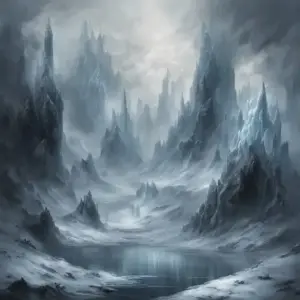
Niflheim: Primordial realm of icy mists
In Old Norse, Niflheim translates approximately to “Mist Home” or “Home of Fog.” As this name implies, Sturluson describes Niflheim as a world of perpetual gloom, frigid cold, and icy mists.
Located somewhere in the farthest frozen north, its forbidding landscape contained the eleven poison-filled rivers collectively called Élivágar. At the heart of Niflheim sputtered the roaring, boil-churned wellspring Hvergelmir, from which all these icy rivers flowed.
According to Sturluson, Niflheim’s interaction with its opposite, the fiery realm Muspellheim, gave birth to creation itself. The meeting of intense heat and bitter chill generated the life-giving moisture from which the frost giant Ymir sprang. From Ymir’s body, in turn, the gods eventually carved the ordered cosmos of Midgard.
So in Norse mythology, icy Niflheim represents one half of the primordial dichotomy whose clash sparked existence. The other root of Yggdrasill was also believed to be anchored in its frigid soil.
As the wellspring from which the rivers of creation flow, yielding life even amidst deathly cold, Niflheim symbolizes the power of opposing elemental forces. Darkness needs light, death feeds life, and the end heralds the beginning.
Helheim: The Underworld of the Dishonored Dead
Unlike the misty Genesis realm of Niflheim, Helheim unquestionably represents the Viking underworld. Ruled by the fearsome goddess Hel, it served as a neutral afterlife destination for those who died of old age, illness, or other mundane causes.
Helheim appears far more frequently in Norse myth and poetry than Niflheim. Both the Poetic Edda, including works like Baldrs Draumar and Völuspá, and Sturluson’s Prose Edda contain references to it.
They depict it as a dark, gloomy realm separated from the living by various rivers and gates. While not overtly punitive like the Christian hell, Helheim was still a dreary underworld existence reserved for those who lived out unremarkable lives.
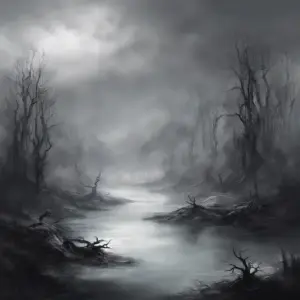
Helheim: Underworld kingdom of the dead
In contrast to the warriors of Valhalla or deceased heroines like Freyja’s Fólkvangr, most ended up in the cheerless halls of Helheim after death. There they passed the time in meaningless imitation of their earthly lives.
It was not a place of punishment per se, but Norse myth makes clear it paled in comparison to the heroic afterlives. Helheim was the default underworld destination for any who died in bed rather than on the battlefield.
The Goddess Hel: Ruler of the Dishonored Dead
Helheim was ruled over by perhaps its most famous denizen, the goddess Hel. Unlike many Norse gods, surviving textual evidence indicates Hel was most likely not worshipped or revered during the Viking Age.
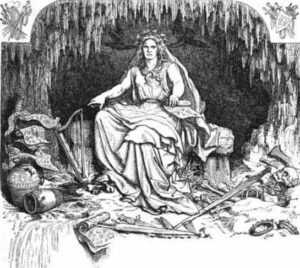
Hel
Rather, scholarly consensus holds that she emerged sometime in the late pagan era, likely as Nordic interpretations of the afterlife shifted due to Christian influence. A goddess ruling over a subterranean realm for the dishonored dead mirrors the Christian concept of hell far more closely than early Nordic views.
In the Prose Edda, Hel is described as half beautiful maiden, half rotting corpse. She oversees the dead who enter her eponymous underworld kingdom. Though not overtly malevolent, she is a harsh, uncompromising ruler. Those who come before her cannot leave, no matter how desperately the living might miss them.
The Hel introduced by Sturluson again appears to be an attempt to synthesize indigenous beliefs with contemporary Christian ones. By the 1200s, pagan grave goods and funerals had fallen out of favor, and Scandinavians likely felt increasing pressure to conform to Continental ideas of death and the afterlife.
Though linked to far older concepts, Hel as a goddess ruling over a gloomy underworld for dishonorable souls has the marks of Christian influence all over her.
Niflheim vs Helheim in Norse Mythology
Now that we have reviewed both realms individually, we can directly compare Niflheim and Helheim to clarify their relationship in Norse cosmology. While often conflated or confused, they represent distinct concepts:
- Niflheim is one of two primordial realms that existed prior to the cosmos, playing a pivotal role in creation. It represents elemental ice, darkness, and the lifegiving yet destructive power of cold.
- Helheim is an underworld where the common dead who did not achieve valorous deaths reside afterlife. It is ruled by the goddess Hel and symbolizes dreary afterlife existences for those not honored with heroic funerals.
The key distinction arises when looking at the timeline of Norse myth and the origins of each term. Niflheim precedes the cosmos and shapes its genesis. Helheim exists within the cosmos as a holding place for dead souls.
Additionally, Niflheim appears solely in Snorri Sturluson’s 13th-century work. Earlier Poetic Edda poems make no mention of it. Meanwhile, Helheim maintains a constant presence in Norse verse throughout and after the Viking Age. References to “Hel” predate Christianity’s arrival.
This indicates that while Niflheim was likely Sturluson’s attempt to flesh out the creation process, Helheim almost certainly derives from older oral and literary traditions as the prototypical Norse underworld. It represents indigenous pagan concepts of death and the afterlife more authentically than Niflheim.
Key Differences Between Niflheim and Helheim
To recap, the key differences between Niflheim and Helheim in Norse mythology include:
- Niflheim represents icy mists and darkness, while Helheim symbolizes an underworld realm for the dead.
- Niflheim is described as a primordial realm of icy mists, darkness and cold. Helheim is an underworld realm for the dead located beneath one of Yggdrasill’s roots.
- Niflheim existed before the ordered cosmos and assisted in its creation. Helheim exists within the cosmos as one of the Nine Worlds visited by gods, giants and men.
- Niflheim contains the icy rivers Elivagar and the well Hvergelmir, source of all rivers. Helheim is divided from other realms by the river Gjöll and guarded by the dog Garm.
- Niflheim represents elemental forces while Helheim represents the fate of mortal souls after death.
- Niflheim is associated with origins and the emergence of life. Helheim is associated with endings and what awaits humans after death.
- No ruler or personification is ascribed to Niflheim. Helheim is ruled by the goddess Hel, who oversees the dishonored dead that dwell there.
- Niflheim housed one root of Yggdrasill but contained no halls or structures. Helheim contained the hall Eljudnir and other dwellings of the dead.
- Niflheim embodied cold, darkness and mist. But it was not an unpleasant realm for entities that dwelled there. Helheim was gloomy and joyless compared to heroic afterlives like Valhalla.
- Niflheim represents elemental primordial forces while Helheim represents mortality and the finite nature of human life.
- Visits to Niflheim by gods are not recounted. Gods like Odin and Hermod traveled to Helheim to gather knowledge from the dead.
Modern Interpretations and Popular Culture Depictions
Due in part to the conflation between Niflheim and Helheim in many English translations and summaries of Norse myth, their nature and relationship have grown quite muddied in the modern consciousness.
Many presume Niflheim and Helheim are two names for the same mythological realm. However, this blurring of terms overlooks the distinct cosmological roles each plays.
In popular culture, this tendency towards confusion and conflation also manifests. Viking-themed shows, games and art will frequently use Niflheim and Helheim interchangeably as a dark, icy underworld.
For instance, in the popular God of War (2018) video game, the protagonist Kratos journeys to “Niflheim” to uncover the source of the undead. This nudges it closer to Christianized notions of hell and the demonic, very different from Niflheim’s actual role as a realm of primordial icy mists.
Clearing up this modern misconception requires returning ad fontes and analyzing what purpose each underworld served in Norse myth. As we have seen, Niflheim resides at the very origin of the cosmos, the necessary counterpart to Muspellheim’s fire.
Helheim is one among many realms, a neutral if bleak afterlife for the common deceased. Vikings saw them as distinct, and maintaining this differentiation keeps our modern understanding accurate.
Niflheim vs Helheim – Faqs
Is Helheim and Niflheim the same?
No, Helheim and Niflheim are two distinct realms in Norse cosmology. Niflheim is the icy, misty realm of primordial chaos, while Helheim is the underground realm ruled by Hel where some of the dead dwell. The two are sometimes confused since in later sources Hel’s realm is said to be located within Niflheim.
Who goes to Helheim?
In Norse mythology, those who die of old age or illness go to Helheim, ruled over by the goddess Hel. It is not a place of punishment, simply the abode of the dead who did not die in battle. Only some of the dead went to Helheim, as others went to different realms based on how they died.
What is the difference between Helheim and Valhalla?
In Norse belief, Valhalla was the majestic hall where warriors chosen by Odin resided after death, feasting and battling perpetually. Helheim was an underground realm ruled by the goddess Hel where those who died of old age or illness, not in battle, went after passing.
What was Hel the goddess of?
Hel was the Norse goddess of the dead and ruler over the realm of Helheim, where those who died of old age or illness reside after passing. She determined the fate of souls that came to her realm.
Where is Hel located in Norse mythology?
In the Norse cosmological view, Helheim was located down below one of the roots of the world tree Yggdrasil. It was a cold, gloomy realm shrouded in darkness, set apart from the other worlds. Those traveling to Helheim had to pass through dark valleys and over the river Gjöll.
What is Niflheim known for?
In Norse cosmology, Niflheim was one of the primordial realms, known for its icy mists and freezing cold. It contained the spring Hvergelmir, source of eleven rivers, and was where the frost giant Ymir was formed from melting ice. Niflheim’s interaction with Muspelheim created the cosmos.
What are the 9 worlds of Niflheim?
Niflheim is not divided into nine worlds itself in Norse myth. The nine worlds exist across the various realms of Norse cosmology, including Asgard, Midgard, Jotunheim, and others. Niflheim is simply one of the main primal realms along with Muspelheim.
What gods live in Niflheim?
No gods are said to inhabit the icy realm of Niflheim in Norse sources. The dragons Nidhogg and other serpents dwell there gnawing on the roots of Yggdrasil. The primordial frost giant Ymir was born from Niflheim, but Odin and the Aesir gods hail from other realms.
Does Niflheim play a major role in Ragnarok?
Niflheim does not play a major role in Ragnarok, the apocalyptic battle that destroys much of the cosmos in Norse myth. However, the dragon Nidhogg who dwells in Niflheim will emerge during Ragnarok to fight on the side of the giants against the gods.
How is Niflheim pronounced?
Niflheim is pronounced “NIHV-lahyme” or “NIHV-lhigh-meh” in English, with the “fl” sounding like the “fl” in fluid, not flip. The Old Norse would have been something like “NIVL-heyms.”
What does Niflheim mean in Old Norse?
The Old Norse name Niflheimr meant “Home of Mist” or “Mist World.” It combines “nifl” meaning mist or fog with “heimr” meaning world or home. This stems from the primordial icy mists that were believed to arise from the springs of Niflheim.
How does Niflheim fit into Norse cosmology?
In Norse cosmology, Niflheim was one of the two primal realms that originated at the creation of the universe, representing icy fog and darkness. Its interaction with the fiery realm of Muspelheim created the first being, Ymir, and eventually the cosmos and worlds as they came to be.
What is the landscape of Niflheim like?
Niflheim is described as a frigid, dark, misty realm. The Prose Edda depicts it as having the icy spring Hvergelmir surrounded by eleven frozen rivers. It is a world of primeval ice, cold and gloom, located under one of the three roots of Yggdrasil, the world tree.
What are the names of the rivers flowing from Hvergelmir?
According to Snorri Sturluson’s Prose Edda, the eleven rivers that flow from the spring Hvergelmir in Niflheim are called Svöl, Gunnthrá, Fjörm, Fimbulthul, Slídr, Hríd, Sylgr, Ylgr, Víd, Leiptr and Gjöll.
Who dwells in the realm of Niflheim?
The dragon Nidhogg and his brood of serpents inhabit Niflheim, gnawing perpetually on the root of Yggdrasil. The primordial frost giant Ymir was born from the icy waters of Niflheim before the gods created the cosmos. No gods dwell there, only these ancient primordial creatures.
What descriptions are provided about Niflheim in the Eddas?
Both the Poetic Edda and Prose Edda depict Niflheim similarly as a cold, misty, dark realm of primordial origin. The Prose Edda contains more detailed descriptions, including the rivers, Hvergelmir spring, and Nidhogg who dwells there. It is also sometimes confused with Hel’s realm.
See also:
Niflheim: The Primordial Realm of Ice and Mist in Norse Mythology
Helheim: The Norse Mythological Realm of the Dead
Shop Viking Jewelry
Are passionate about Vikings or Norse Mythology?
Finding the ideal piece of Viking Jewelry can be challenging and time-consuming, especially if you lack inspiration or don’t know where to look.
Surflegacy, has you covered. We have a wide range of Handmade Jewelry in various styles, shapes, colors, and materials, to accentuate your Viking spirit and look. Do not hesitate to visit our selection HERE

